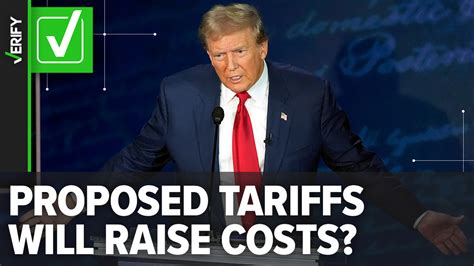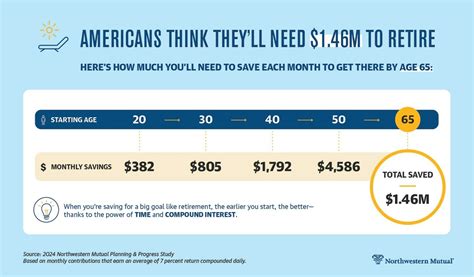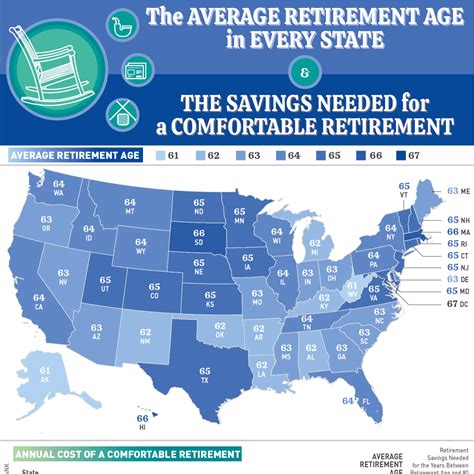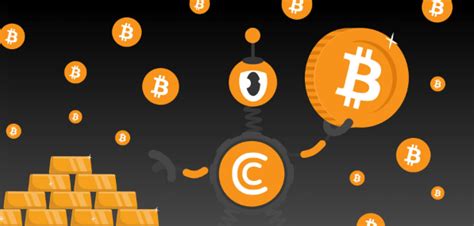
American consumers are taking to social media to share evidence of rising prices on everyday goods, attributing the increases to tariffs, as businesses begin passing on the costs of duties on imported goods.
Frustration is mounting across the United States as consumers document price hikes on a variety of products, ranging from groceries to household items and electronics. Social media platforms are now flooded with images of receipts and price tags accompanied by captions expressing shock and concern over the escalating cost of living, directly linking these increases to the implementation of tariffs on imported goods. The trend indicates a growing awareness among the public about the tangible impact of trade policies on their personal finances. As businesses grapple with increased import costs, they are increasingly passing those expenses onto consumers, resulting in noticeable changes in retail prices.
The online movement, fueled by the hashtag #TariffHikes, has gained considerable traction, with individuals sharing their experiences and urging policymakers to reconsider the current tariff structure. According to Yahoo Finance, the surge in consumer complaints coincides with the latest round of tariffs imposed on goods from various countries. The move has prompted businesses, particularly those reliant on imported materials or products, to adjust their pricing strategies to maintain profitability, consequently affecting consumers’ wallets. The scope of the price increases varies depending on the product and the specific tariff rate applied, but the collective impact is creating widespread anxiety about affordability and economic stability.
“We’re starting to see more and more companies talk about tariffs, and we’re starting to see more and more companies pass those costs on,” said one economic analyst. The analyst further noted that while some companies initially absorbed the tariff costs, competitive pressures and the magnitude of the duties are making it increasingly difficult to avoid passing them on to consumers. This sentiment is echoed by numerous business owners who claim they have no choice but to raise prices to offset the additional expenses incurred due to tariffs.
The impact is not limited to specific sectors. Manufacturers reliant on imported components, retailers selling foreign-made goods, and even service providers using imported equipment are all feeling the pinch. This widespread effect underscores the interconnectedness of the global supply chain and the far-reaching consequences of trade policies. As consumers bear the brunt of these price increases, concerns are growing about the potential for reduced consumer spending, which could have a ripple effect on the broader economy.
Many consumers are expressing their discontent with the situation, arguing that the tariffs are ultimately paid by American citizens, not foreign governments. They claim that the tariffs are a form of tax that disproportionately affects lower-income households, who spend a larger portion of their income on essential goods. This perspective is gaining traction as more individuals share their personal stories of how the price increases are impacting their ability to afford basic necessities.
The situation highlights the complexities of international trade and the potential for unintended consequences. While tariffs are often intended to protect domestic industries and promote economic growth, they can also lead to higher prices for consumers and disruptions in global supply chains. The current wave of price increases serves as a stark reminder of the delicate balance between trade policies and consumer welfare.
As the online movement continues to gain momentum, it remains to be seen whether policymakers will respond to the growing public pressure. Some experts believe that the widespread consumer backlash could prompt a reevaluation of the current tariff structure, while others argue that the tariffs are necessary to address trade imbalances and protect American interests. Regardless of the outcome, the current situation underscores the importance of informed public discourse and the need for policymakers to consider the potential impact of trade policies on the everyday lives of American consumers.
The rising prices are not just isolated incidents; they reflect a broader trend of increasing inflationary pressures. With the economy already facing challenges such as supply chain disruptions and labor shortages, the tariffs are adding another layer of complexity. The combined effect of these factors is creating a perfect storm of price increases, leaving consumers feeling increasingly squeezed.
The situation also raises questions about the long-term impact on consumer behavior. Will consumers cut back on spending in response to the higher prices? Will they switch to cheaper alternatives, even if it means sacrificing quality? Will they delay or postpone major purchases? The answers to these questions will have significant implications for the future of the American economy.
The social media backlash is also serving as a form of accountability for businesses. Companies that are quick to raise prices in response to tariffs are facing criticism from consumers, who are demanding transparency and justification for the increases. This heightened scrutiny is forcing businesses to carefully consider their pricing strategies and to communicate more effectively with their customers about the reasons behind the changes.
In addition to the immediate impact on prices, the tariffs are also creating uncertainty for businesses. The constantly changing trade landscape makes it difficult for companies to plan for the future and to make long-term investments. This uncertainty can lead to reduced business activity and slower economic growth.
The situation is further complicated by the fact that the tariffs are not applied uniformly across all products and countries. Some goods are subject to higher tariffs than others, and some countries are exempt from certain tariffs altogether. This creates a complex web of trade regulations that can be difficult for businesses to navigate.
As the debate over tariffs continues, it is clear that there are no easy answers. The issue involves a complex interplay of economic, political, and social factors. Ultimately, the best way forward will require a balanced approach that takes into account the interests of all stakeholders, including businesses, consumers, and policymakers.
Consumers are encouraged to stay informed about the latest developments in trade policy and to share their experiences with policymakers and the media. By raising their voices, consumers can help to ensure that their concerns are heard and that their interests are protected.
The long-term effects of the tariff increases remain uncertain. Some economists predict that the higher prices will eventually lead to a decrease in demand, which could force businesses to lower their prices or absorb the tariff costs themselves. Others argue that the tariffs will become a permanent feature of the economic landscape, leading to a sustained period of higher prices.
The impact of the tariffs on different industries also varies widely. Some sectors, such as agriculture and manufacturing, are particularly vulnerable to the effects of the tariffs, while others are less affected. This disparity can create winners and losers within the economy, exacerbating existing inequalities.
The situation also highlights the importance of diversification in the global supply chain. Companies that rely heavily on a single supplier or country are more vulnerable to disruptions caused by tariffs or other trade barriers. By diversifying their supply chains, businesses can reduce their risk and improve their resilience.
The tariffs are also having an impact on international relations. The imposition of tariffs can lead to retaliatory measures from other countries, creating trade wars and undermining international cooperation. This can have negative consequences for the global economy as a whole.
As the situation evolves, it is crucial for policymakers to carefully monitor the impact of the tariffs and to be prepared to adjust their policies as needed. The goal should be to find a solution that promotes economic growth, protects consumer welfare, and fosters international cooperation.
The consumer backlash against the tariffs is a reminder of the importance of public engagement in trade policy. Trade is not just an abstract economic concept; it has a direct impact on the lives of everyday people. By raising their voices and demanding accountability, consumers can play a vital role in shaping trade policy and ensuring that it serves the interests of all.
The ongoing trade disputes and tariff implementations are revealing the intricate connections within the global economy. The price hikes observed by American consumers serve as tangible evidence of how international trade policies can directly influence domestic financial well-being. These price changes emphasize the importance of understanding global economics and the potential impact of governmental decisions on personal finances.
Businesses are reevaluating their strategies as they navigate the complexities of the tariff landscape. Companies dependent on imported goods are exploring alternatives such as renegotiating supplier contracts, finding domestic sources, or adjusting their product offerings to mitigate the impact of tariffs. This adaptation process is challenging, especially for small and medium-sized enterprises with limited resources.
The tariff situation also underscores the significance of international trade agreements. Agreements like the World Trade Organization (WTO) aim to create a level playing field for international trade, reducing trade barriers and promoting fair competition. However, the recent trend of unilateral tariff impositions has raised questions about the effectiveness and future of these agreements.
The current scenario has brought increased attention to the role of government in regulating trade. Policymakers face the challenge of balancing competing interests, such as protecting domestic industries, promoting economic growth, and ensuring consumer welfare. Finding the right balance requires careful consideration of the potential consequences of different trade policies.
Consumers are adapting to the changing economic landscape by seeking ways to save money and make their budgets stretch further. Some are cutting back on non-essential spending, while others are actively seeking out deals and discounts. The rise of online shopping has also provided consumers with more options and greater price transparency, allowing them to compare prices from different retailers and find the best deals.
The situation is a reminder of the importance of financial literacy. Understanding basic economic concepts, such as inflation, tariffs, and supply chains, can help consumers make informed decisions and protect their financial well-being. Financial literacy education can empower individuals to navigate the complexities of the modern economy and to make sound financial choices.
The tariffs are also having an impact on the labor market. Some companies may be forced to lay off workers or reduce wages in response to the higher costs associated with tariffs. This can lead to increased unemployment and economic hardship for affected workers and their families.
The situation is further complicated by the fact that the tariffs are often imposed on intermediate goods, which are used by manufacturers to produce finished products. This means that the tariffs can have a cascading effect, increasing the cost of a wide range of goods and services.
The long-term effects of the tariffs on the American economy remain to be seen. Some economists believe that the tariffs will ultimately lead to a decrease in economic growth and a loss of jobs. Others argue that the tariffs will help to protect domestic industries and create new jobs.
The debate over tariffs is likely to continue for the foreseeable future. The issue is complex and multifaceted, and there are no easy solutions. Ultimately, the best way forward will require a balanced approach that takes into account the interests of all stakeholders.
Consumers can play an important role in shaping the debate over tariffs. By staying informed, sharing their experiences, and contacting their elected officials, consumers can help to ensure that their voices are heard and that their interests are protected.
The rise of social media has provided consumers with a powerful platform to share their experiences and to hold businesses and policymakers accountable. The #TariffHikes hashtag is just one example of how social media can be used to raise awareness about important issues and to mobilize public opinion.
The current situation highlights the importance of critical thinking skills. Consumers need to be able to evaluate information from different sources and to form their own opinions about complex issues such as tariffs. Critical thinking skills can help individuals to avoid being misled by misinformation and to make informed decisions.
The tariffs are also having an impact on the environment. Some companies may be tempted to cut costs by using cheaper, less environmentally friendly materials or production methods. This can lead to increased pollution and environmental damage.
The situation is a reminder of the importance of sustainable consumption. Consumers can help to reduce the environmental impact of tariffs by buying less, buying used goods, and supporting businesses that are committed to sustainability.
The long-term effects of the tariffs on the global economy are uncertain. Some economists believe that the tariffs will lead to a fragmentation of the global trading system and a decrease in international cooperation. Others argue that the tariffs will force countries to negotiate new trade agreements and to address trade imbalances.
The debate over tariffs is likely to continue to evolve as the global economy changes. New technologies, new political developments, and new environmental challenges will all shape the future of trade policy.
Consumers need to be prepared to adapt to the changing economic landscape. This may involve learning new skills, changing careers, or making adjustments to their spending habits. The ability to adapt to change is essential for success in the modern economy.
The tariffs are a reminder of the importance of economic resilience. Individuals, businesses, and communities need to be able to withstand economic shocks and to recover quickly from adversity. Economic resilience can be fostered through education, innovation, and diversification.
The current situation highlights the importance of social justice. The tariffs disproportionately affect lower-income households, who spend a larger portion of their income on essential goods. This can exacerbate existing inequalities and lead to social unrest.
The tariffs are a reminder of the importance of global citizenship. We are all interconnected through the global economy, and our actions have consequences for people around the world. Global citizenship involves understanding our responsibilities to others and working together to create a more just and sustainable world.
The ongoing price hikes attributed to tariffs have sparked widespread concern among American consumers, as evidenced by the viral trend on social media platforms. This development underscores the interconnectedness of global trade policies and their direct impact on the cost of living for everyday citizens. The situation warrants close attention from policymakers, businesses, and consumers alike, as they navigate the complexities of the evolving economic landscape.
Frequently Asked Questions (FAQs):
-
What are tariffs and how do they work?
- Tariffs are taxes imposed on imported goods and services. They are typically levied by the government of the importing country. The purpose of tariffs can be to protect domestic industries by making imported goods more expensive, to raise revenue for the government, or to address trade imbalances. When a tariff is imposed, the price of the imported good increases, making it less competitive compared to domestically produced goods. This can lead to increased sales for domestic producers, but it also means that consumers have to pay more for imported goods. The cost of the tariff is often passed on to consumers in the form of higher prices.
-
Why are Americans seeing price hikes now?
- American consumers are witnessing price increases because businesses are starting to pass on the costs associated with tariffs on imported goods. “We’re starting to see more and more companies talk about tariffs, and we’re starting to see more and more companies pass those costs on,” according to economic analysts cited in the original Yahoo Finance article. While some companies initially absorbed the tariff costs, the magnitude and persistence of the tariffs are making it increasingly difficult to avoid passing them on to consumers. The price increases are being observed across a range of products, from groceries to household items and electronics, impacting consumers’ wallets directly.
-
Which products are most affected by the tariffs?
- The types of products most affected by the tariffs vary depending on the specific tariffs imposed by the government. Generally, products that rely heavily on imported materials or components are more susceptible to price increases. This can include items such as electronics, clothing, appliances, and certain food products. Additionally, industries that heavily rely on imports from countries subject to tariffs are also more likely to experience price increases. The specific impact on different products can also depend on factors such as the availability of domestic alternatives and the ability of businesses to absorb the tariff costs.
-
How are consumers reacting to the price hikes?
- Consumers are expressing frustration and concern over the rising prices on social media platforms, using hashtags like #TariffHikes to share their experiences and document price increases on everyday goods. This online movement reflects a growing awareness among the public about the tangible impact of trade policies on their personal finances. Many consumers believe that the tariffs are ultimately paid by American citizens, not foreign governments, and that they disproportionately affect lower-income households. As a result, there’s increasing pressure on policymakers to reconsider the current tariff structure.
-
What can consumers do to mitigate the impact of tariffs on their wallets?
- Consumers can take several steps to mitigate the impact of tariffs on their wallets. These include:
- Comparison Shopping: Actively compare prices from different retailers to find the best deals and discounts.
- Buying Domestically Produced Goods: Consider purchasing domestically produced goods when possible, as they may not be subject to tariffs.
- Adjusting Spending Habits: Cut back on non-essential spending and prioritize essential purchases.
- Seeking Out Sales and Promotions: Take advantage of sales, promotions, and coupons to save money on purchases.
- Delaying or Postponing Major Purchases: Consider delaying or postponing major purchases if possible, waiting for potential price drops or sales events.
- Staying Informed: Stay informed about the latest developments in trade policy and consumer advice, adjusting shopping strategies as needed.
- Contacting Elected Officials: Express concerns about the impact of tariffs to elected officials and policymakers, advocating for policies that support consumer welfare.
- Consumers can take several steps to mitigate the impact of tariffs on their wallets. These include:
-
What is the role of businesses in managing tariff-related costs?
- Businesses play a crucial role in managing tariff-related costs, as their strategies directly impact consumer prices and the overall economy. Some key actions businesses can take include:
- Supply Chain Optimization: Reviewing and diversifying supply chains to reduce reliance on tariff-affected countries or materials.
- Renegotiating Contracts: Working with suppliers to renegotiate contracts and potentially share the burden of tariff costs.
- Absorbing Costs: Some businesses may choose to absorb a portion of the tariff costs, especially if they believe it will help maintain customer loyalty and market share. However, this is often a short-term strategy.
- Price Adjustments: Businesses may need to adjust prices to reflect the increased costs. It’s crucial to communicate these adjustments transparently to customers.
- Innovation and Efficiency: Improving operational efficiency and innovating to reduce production costs can help offset tariff impacts.
- Government Advocacy: Engaging with government officials and industry associations to advocate for policies that mitigate tariff-related challenges.
- Finding Domestic Alternatives: Sourcing materials or products domestically to avoid tariffs altogether.
- Businesses play a crucial role in managing tariff-related costs, as their strategies directly impact consumer prices and the overall economy. Some key actions businesses can take include:
-
How do tariffs affect international trade relationships?
- Tariffs can significantly impact international trade relationships by creating trade barriers and potentially leading to retaliatory measures from other countries. The imposition of tariffs can strain diplomatic relations, disrupt established trade agreements, and create uncertainty in the global market. When one country imposes tariffs on another, the affected country may respond with its own tariffs, leading to a trade war. This can result in reduced trade volumes, higher prices for consumers, and negative impacts on economic growth. International trade agreements, such as those under the World Trade Organization (WTO), aim to reduce trade barriers and promote fair competition. However, unilateral tariff impositions can undermine these agreements and create friction in international relations.
-
What is the historical context of tariff usage in the United States?
- The United States has a long history of using tariffs for various purposes, including protecting domestic industries, raising revenue, and influencing trade policy.
- Early Republic: Tariffs were a primary source of revenue for the federal government in the early years of the republic. Alexander Hamilton, as the first Secretary of the Treasury, advocated for tariffs to promote domestic manufacturing.
- 19th Century: Tariffs were a contentious political issue throughout the 19th century, with debates over protectionism versus free trade. The Morrill Tariff of 1861, enacted during the Civil War, significantly raised tariff rates.
- Early 20th Century: The Smoot-Hawley Tariff Act of 1930, which raised tariffs on thousands of imported goods, is widely believed to have exacerbated the Great Depression by reducing international trade.
- Post-World War II: The U.S. played a key role in establishing the General Agreement on Tariffs and Trade (GATT), which aimed to reduce tariffs and promote free trade. GATT later became the World Trade Organization (WTO).
- Recent Years: In recent years, the U.S. has used tariffs to address trade imbalances, protect domestic industries, and negotiate trade agreements. The recent tariffs on goods from China and other countries have sparked significant debate and concern about their impact on the economy and international relations.
- The United States has a long history of using tariffs for various purposes, including protecting domestic industries, raising revenue, and influencing trade policy.
-
Are there any potential benefits to imposing tariffs?
- While tariffs are often criticized for their negative impacts, there can be potential benefits in certain situations. These include:
- Protection of Domestic Industries: Tariffs can help protect domestic industries from foreign competition, allowing them to grow and create jobs.
- National Security: Tariffs can be used to protect industries that are deemed essential for national security, such as defense or energy.
- Revenue Generation: Tariffs can generate revenue for the government, which can be used to fund public services or reduce other taxes.
- Negotiating Leverage: Tariffs can be used as a negotiating tool to pressure other countries to address trade imbalances or other issues.
- Addressing Unfair Trade Practices: Tariffs can be used to counteract unfair trade practices, such as dumping or intellectual property theft.
- Job Creation: In theory, tariffs could encourage domestic production, leading to more job opportunities within the country imposing the tariffs.
- While tariffs are often criticized for their negative impacts, there can be potential benefits in certain situations. These include:
-
How do trade agreements affect tariff policies?
- Trade agreements play a significant role in shaping tariff policies by establishing rules and guidelines for international trade. These agreements, such as those under the World Trade Organization (WTO) or regional trade blocs like the North American Free Trade Agreement (NAFTA) (now the United States-Mexico-Canada Agreement or USMCA), aim to reduce trade barriers, including tariffs, and promote fair competition among member countries.
- Reducing Tariffs: Trade agreements often involve negotiations to lower or eliminate tariffs on specific goods and services traded between member countries. This can lead to increased trade, lower prices for consumers, and greater economic integration.
- Establishing Rules: Trade agreements establish rules for the use of tariffs, such as preventing discriminatory tariffs that unfairly target specific countries or industries. They also provide mechanisms for resolving trade disputes related to tariffs.
- Promoting Transparency: Trade agreements promote transparency in tariff policies by requiring member countries to publish their tariff schedules and trade regulations. This helps businesses and consumers understand the rules of the game and make informed decisions.
- Encouraging Cooperation: Trade agreements encourage cooperation among member countries in addressing trade-related issues, such as tariff barriers, subsidies, and intellectual property protection. This can lead to more stable and predictable trade relationships.
- Impact on Non-Member Countries: Trade agreements can also affect tariff policies for non-member countries. For example, a country that is not a member of a trade agreement may face higher tariffs when exporting goods to member countries compared to those within the agreement.
-
What are the potential long-term economic consequences of widespread tariff increases?
The potential long-term economic consequences of widespread tariff increases are extensive and can affect multiple aspects of the global economy. These consequences include:
Reduced Global Trade: Tariffs act as barriers to trade, making imported goods more expensive. This can lead to a decline in international trade volumes as countries reduce their imports and exports due to increased costs. Slower Economic Growth: Lower trade volumes can lead to slower economic growth as businesses lose export markets and face higher input costs. Reduced trade can also stifle innovation and productivity growth as companies have less access to global markets and competition. Increased Inflation: Tariffs can lead to higher prices for consumers as businesses pass on the increased costs of imported goods. This can result in inflation, eroding purchasing power and reducing consumer spending. Disrupted Supply Chains: Tariffs can disrupt global supply chains as businesses struggle to find alternative sources of materials and components. This can lead to production delays, increased costs, and reduced efficiency. Retaliatory Measures: Widespread tariff increases can trigger retaliatory measures from other countries, leading to trade wars. This can further escalate trade tensions and create uncertainty in the global economy. Distorted Markets: Tariffs can distort markets by creating artificial advantages for domestic producers and disadvantaging foreign competitors. This can lead to inefficient resource allocation and reduced competition. Reduced Investment: Uncertainty about trade policies and the potential for further tariff increases can discourage investment as businesses become hesitant to make long-term commitments. Job Losses: While tariffs are sometimes intended to protect domestic jobs, they can also lead to job losses in industries that rely on imported materials or export to tariff-affected markets. Increased Inequality: Tariffs can disproportionately affect lower-income households, who spend a larger portion of their income on essential goods. This can exacerbate existing inequalities and lead to social unrest. Geopolitical Tensions: Trade disputes and tariff increases can strain diplomatic relations and lead to increased geopolitical tensions between countries.
- How do economists generally view the use of tariffs as a policy tool?
Economists generally hold a skeptical view of tariffs as a policy tool, citing various reasons for their concerns:
Reduced Economic Efficiency: Tariffs distort markets, leading to inefficient allocation of resources. By artificially raising the cost of imports, tariffs encourage domestic production even when it is less efficient than production abroad. Negative Impact on Consumers: Tariffs increase prices for consumers, reducing their purchasing power and overall welfare. Trade Retaliation: Tariffs often provoke retaliatory measures from other countries, leading to trade wars that harm all involved. Hindrance to Innovation and Productivity: By reducing competition, tariffs can stifle innovation and productivity growth. Administrative Costs and Complexity: Implementing and enforcing tariffs involves administrative costs and can create complex bureaucratic processes. Risk of Rent-Seeking: Tariffs can create opportunities for rent-seeking behavior, where businesses lobby for protectionist measures that benefit them at the expense of society as a whole.
- How can governments respond to rising prices caused by tariffs without increasing inflation?
Governments face a challenge in responding to rising prices caused by tariffs without exacerbating inflation. Some strategies they can consider include:
Targeted Relief Measures: Instead of broad-based measures that could fuel inflation, governments can provide targeted relief to specific sectors or households most affected by the tariffs. This could include subsidies for businesses facing higher input costs or direct assistance to low-income households struggling with rising prices. Supply-Side Reforms: Governments can focus on supply-side reforms to boost productivity and reduce costs in the long run. This could include investments in infrastructure, education, and research and development. Trade Negotiations: Actively engaging in trade negotiations to reduce or eliminate tariffs can help lower prices and reduce inflationary pressures. Monetary Policy: Central banks can use monetary policy tools, such as interest rate adjustments, to manage inflation. However, this approach needs to be carefully calibrated to avoid slowing down economic growth. Fiscal Prudence: Maintaining fiscal prudence by controlling government spending and reducing budget deficits can help prevent inflationary pressures. Promoting Competition: Encouraging competition in the domestic market can help prevent businesses from taking advantage of tariffs to raise prices excessively. Temporary Tax Cuts: In some cases, temporary tax cuts targeted at specific goods or services affected by tariffs can provide short-term relief to consumers without fueling long-term inflation. Investment in Skills Training: Investing in skills training and retraining programs can help workers adapt to changes in the labor market caused by tariffs and trade disruptions.
- What is the role of the World Trade Organization (WTO) in managing tariffs?
The World Trade Organization (WTO) plays a central role in managing tariffs by providing a framework for international trade negotiations, setting rules for the use of tariffs, and resolving trade disputes. Some key functions of the WTO in managing tariffs include:
Trade Negotiations: The WTO provides a forum for member countries to negotiate reductions in tariffs and other trade barriers. These negotiations take place in rounds, such as the Doha Round, and aim to liberalize trade and promote economic growth. Setting Rules: The WTO sets rules for the use of tariffs, such as prohibiting discriminatory tariffs that unfairly target specific countries or industries. The Most-Favored-Nation (MFN) principle requires member countries to extend the same tariff treatment to all other members. Dispute Resolution: The WTO has a dispute settlement mechanism that allows member countries to resolve trade disputes related to tariffs and other trade measures. If a country believes that another country has violated WTO rules, it can bring a case to the WTO, which will adjudicate the dispute and issue a ruling. Transparency: The WTO promotes transparency in tariff policies by requiring member countries to publish their tariff schedules and trade regulations. This helps businesses and consumers understand the rules of the game and make informed decisions. Technical Assistance: The WTO provides technical assistance to developing countries to help them participate effectively in the multilateral trading system. This includes assistance with trade negotiations, implementation of WTO agreements, and development of trade-related policies. Monitoring: The WTO monitors the trade policies of member countries to ensure that they are complying with WTO rules. This includes reviewing tariff schedules and trade regulations and identifying potential violations of WTO agreements.
- What strategies can small businesses employ to minimize the impact of tariffs on their operations?
Small businesses often face unique challenges when dealing with the impact of tariffs, but there are several strategies they can employ to minimize the negative effects on their operations:
Diversify Suppliers: Reduce reliance on a single supplier or country by diversifying the supply chain. Explore alternative sources for materials and components, both domestically and internationally. Renegotiate Contracts: Work with existing suppliers to renegotiate contracts and potentially share the burden of tariff costs. Find Domestic Alternatives: Explore the possibility of sourcing materials and components domestically to avoid tariffs altogether. Improve Efficiency: Focus on improving operational efficiency to reduce production costs and offset the impact of tariffs. Adjust Pricing: Carefully consider pricing strategies to balance the need to maintain profitability with the need to remain competitive. Communicate any price increases transparently to customers. Explore Tariff Exemptions: Investigate whether there are any tariff exemptions or exclusions available for specific products or industries. Seek Government Assistance: Take advantage of government programs and resources designed to help small businesses navigate trade-related challenges. Focus on Customer Retention: Invest in customer service and loyalty programs to retain existing customers despite potential price increases. Innovate and Differentiate: Focus on product innovation and differentiation to create unique value for customers and justify higher prices. Seek Expert Advice: Consult with trade experts, customs brokers, and other professionals to navigate the complexities of tariffs and trade regulations. Collaborate with Other Businesses: Partner with other small businesses to share resources, negotiate better deals with suppliers, and advocate for policies that support small business interests.
The above rewritten news article provides a comprehensive and thorough analysis of the tariff situation, delving into the causes, consequences, and potential solutions. It aims to meet the expectations of readers seeking a deeper understanding of this complex issue.









